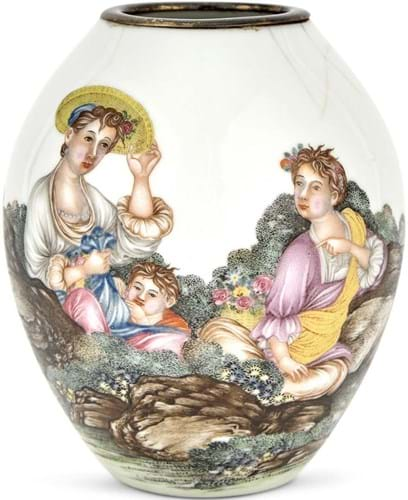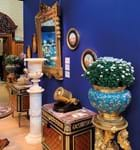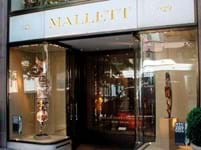The Qianlong mark and period falangcai vase decorated with a continuous scene of two European women and a child in a garden took $2m (£1.55m) on September 20.
The vase is in far from perfect condition, having been reduced from the original ganlanping (olive-shaped vase) form. It now stands 5in (12cm) high and is capped with a silver mount.
Belk Gambrell
It formed part of the collection of porcelain assembled over many decades by Sarah Belk Gambrell (1918- 2020). Keeping houses in New York and Charlotte, she was the daughter of William Henry Belk, who founded the Belk department store chain in the American South, and the wife of banker Charles Glenn Gambrell. Her English and Continental porcelain collection, including some important pieces, was sold at Doyle in June.
Among the many artworks produced by the imperial workshop for use within the Forbidden City, falangcai (or foreign colours) wares of the rarefied guyuexuan type are perhaps the rarest.
Special status
These jewel-like enamels on glass, enamel and ceramics hold the special distinction of having had to pass Qianlong’s own inspection. Porcelain vessels decorated in this way were potted in Jingdezhen and then moved to Beijing for enamelling in the Yangxindian (Hall of Mental Cultivation) in the immediate vicinity of the imperial living quarters.
A small number of similar vases are known. They include the celebrated ‘Golden Pheasant’ vase from the Meiyintang collection and another (perhaps slightly earlier) European-subject vase in the Percival David Collection at the British Museum. It similarly displays two women and a boy in a pastoral setting with the neck worked with a band of arabesques in puce enamel.
The Percival David vase provides a clue to what the Belk Gambrell vase may have looked like when complete. The Meiyintang vase (sold privately after the sale at Sotheby’s Hong Kong for HK$200m/£20m in 2011) gives an idea of the commercial worth of a perfect example.
Doyle said its vase was competed by phone bidders from around the globe well above its pre-sale estimate of $100,000-300,000 to a price that was $2.45m including the 26/21% premium.















